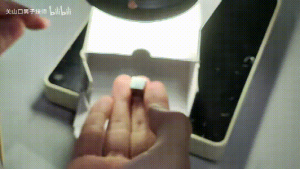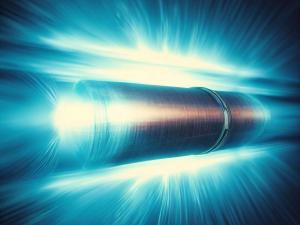The Dawn of Room-Temperature Superconductivity: Implications and Challenges
South Korean researchers claim to have synthesized LK-99, the world's first room-temperature superconductor. Yet its superconductivity remains to be verified.
NEW YORK CITY, NEW YORK, UNITED STATES, August 2, 2023/EINPresswire.com/ -- On July 25, 2023, a groundbreaking discovery by Korean researchers shook the scientific community, as they announced the successful synthesis of the world's first room-temperature and ambient-pressure superconductor, the modified lead phosphorosilicate crystal structure (LK-99). This achievement could revolutionize various industries, offering unprecedented possibilities for power transmission, transportation, medicine, and scientific research. However, further verification is required to fully comprehend the implications of this remarkable breakthrough.Understanding Room-Temperature Superconductivity
Superconductivity is a remarkable physical phenomenon that occurs when certain materials, known as superconductors, exhibit zero electrical resistance and expel magnetic fields below a specific critical temperature (Tc). Traditional superconductors require extremely low temperatures near absolute zero and high pressures to achieve the superconducting state, which limits their practical applications to specialized and costly environments. The pursuit of room-temperature superconductivity, where these extraordinary properties can be achieved at higher, more accessible temperatures, has been a longstanding goal in the field of condensed matter physics.
The discovery of room-temperature superconductivity would revolutionize various industries by enabling unprecedented efficiency, performance, and stability in electrical systems. The potential applications span from power transmission to transportation, medicine, and even scientific research, with the promise of creating a more sustainable and technologically advanced future.
The Birth of LK-99: An Unexpected Solution
The researchers from Korea reported their groundbreaking findings on the preprint website arXiv on July 25, 2023. According to their papers, LK-99 demonstrates superconductivity at temperatures below 127°C without the need for extreme pressures, potentially surpassing the limitations of traditional superconductors.
The development of LK-99 hinged on the modification of the lead-phosphorosilicate crystal structure. The Korean scientists introduced copper ions into the crystal lattice, replacing lead ions strategically, and induced stress distortion to the microstructure. These alterations were intended to enhance the material's superconducting properties and achieve room-temperature superconductivity.
The critical temperature (Tc), which marks the temperature at which a material transitions from a normal state to a superconducting state, was measured to be below 127°C in LK-99. This particular Tc value holds significant importance as it represents a temperature range more accessible than traditional superconductors. The researchers also presented evidence supporting LK-99's superconducting behavior, including zero resistivity, critical current (Ic), critical magnetic field (Hc), and the Meissner effect.
Superconductivity to Be Verified
While the initial results showcased the potential of LK-99 as a room-temperature superconductor, it is important to note that the research findings have not yet been independently verified by other scientific teams.
In light of the claims made by the Korean researchers, scientists from various countries are closely monitoring the findings and planning their own experiments to verify the stability and reliability of LK-99's superconducting behavior. Such verification is crucial to ensure that the results are consistent and can be replicated across different experimental setups and laboratories.
On August 1st, Sinéad Griffin, a researcher at the Lawrence Berkeley National Laboratory (LBNL) in the United States, used the computational power of the U.S. Department of Energy to simulate and claim to have found the theoretical basis for the superconductivity of copper-doped lead phosphorosilicate. This news has garnered great attention and discussion in the tech community.
On the same day, an experimental group at Huazhong University of Science and Technology in China reported successful synthesis of LK-99 crystals capable of magnetic levitation. They released a video demonstrating the levitation of the sample.
However, successfully reproducing magnetic levitation can only prove that LK-99 exhibits diamagnetism, meaning there is repulsion between it and magnets, but it does not prove that it has room-temperature superconducting characteristics. The so-called complete diamagnetism is only a necessary condition for a superconductor, not a sufficient condition.
The video's uploader stated that they have currently only verified the Meissner effect (phenomenon of magnetic field exclusion during the transition of a superconductor from a normal state to a superconducting state). And due to the very small size of the synthesized crystal, they have not been able to measure its resistance. The laboratory is already preparing a new batch of samples in the hope of further measuring LK-99's resistive properties.
Until reproducible evidence is presented, LK-99's true potential and implications in various industries remain to be fully understood.
Implications of Room-Temperature Superconductivity
If room-temperature superconductivity technology can be realized, it can make electrons flow fast in room temperature environment, no resistance, no energy consumption, which will overturn the existing power system. The realization of room-temperature superconductivity will profoundly change the current energy system, information processing and transmission system, and in the medical detection, high-speed transportation and even controlled nuclear fusion and many other areas to bring progress.
1. Power Transmission
Currently, there is a large amount of energy loss in the transmission of electricity, which is estimated to be about 5 to 10 percent of the total global energy consumption. If room-temperature superconducting circuits were used, then there would be no losses in the transmission of electricity, which could result in significant power savings and reduced carbon emissions.
In addition, superconducting power transmission lines can carry higher current densities than conventional cables, enabling more significant power flows without the risk of overheating. This increased capacity enhances the stability and reliability of the power grid, reducing the occurrence of blackouts and voltage fluctuations. The enhanced stability is crucial for critical infrastructures such as hospitals, data centers, and industries that rely on a continuous power supply.
Moreover, room-temperature superconducting technology can efficiently store and transmit renewable energy, thus providing a solution for grid-connected renewable energy. Excess energy generated during peak periods could be stored in superconducting coils, which can hold large amounts of energy with minimal losses. When demand exceeds supply, the stored energy can be released back into the grid without significant losses, ensuring a more balanced and stable power supply from renewable sources.
2. Transportation and Mobility
The transportation sector stands to benefit significantly from room-temperature superconductivity. Maglev trains, which currently rely on costly and energy-intensive cooling systems to maintain superconductivity, could become more accessible and practical with room-temperature superconducting materials. This advancement would lead to faster train speeds, reduced energy consumption, lower operational costs, and quieter travel, making high-speed rail systems more feasible and attractive for mass transit.
Furthermore, electric vehicles (EVs) powered by room-temperature superconducting technology could revolutionize personal transportation. With more efficient power systems, EVs could achieve longer driving ranges and faster charging times through EV-charging cables, addressing two major barriers to wider EV adoption. This advancement would accelerate the shift towards a cleaner and more sustainable transportation system, reducing greenhouse gas emissions and combating air pollution.
3. Computers and Communications
The computing and communications industries would also experience significant changes with the advent of room-temperature superconductivity. Currently, superconducting materials are used in the creation of superconducting quantum bits for quantum computers. However, the requirement for extremely low temperatures makes quantum computers expensive to operate and maintain. Room-temperature superconductivity could eliminate the need for complex cooling systems, making quantum computers more practical and commercially viable. This development would unlock the full potential of quantum computing, enabling groundbreaking advancements in cryptography, drug discovery, optimization, and artificial intelligence.
In the realm of communications, room-temperature superconductivity could lead to the development of more efficient and reliable high-speed communication systems. Fiber-optic communication, which currently relies on numerous optical amplifiers to maintain signal strength over long distances, would benefit from room-temperature superconducting technologies. These systems could transmit data with significantly reduced losses, resulting in higher data transfer rates and improved communication quality.
4. Medical
The medical field could experience a revolution with room-temperature superconductivity, particularly in medical imaging and therapeutic applications. Magnetic Resonance Imaging (MRI) machines, which utilize superconducting magnets to create detailed images of internal body structures, could become more accessible and affordable with room-temperature superconducting materials. This advancement would enhance the quality and accessibility of healthcare, benefiting patients and medical practitioners worldwide.
5. Scientific Research
Currently, there are many uncertainties and controversies about the theory of superconducting mechanism. If room-temperature superconducting materials can be found or fabricated, and detailed experiments and analyses can be performed on them, then they will help to reveal the physical nature and laws behind superconductivity, and may lead to new physical theories and paradigms. In addition, room-temperature superconductivity could also provide more powerful experimental facilities and tools for fields such as high-energy physics, astronomy, and earth sciences.
For example, particle accelerators, which require significant energy and equipment to accelerate and detect particles, could become more efficient and cost-effective with the adoption of room-temperature superconducting technology. This advancement could accelerate discoveries in particle physics and help unravel the mysteries of the universe.
The Future of Room-Temperature Superconductivity
If room-temperature superconductivity technology can be realized, it may be a hot spot in the short term, but it may take a decade or two for new materials to emerge and actually achieve industrial applications.
According to Andrew Cote (@Andercot), to incorporate this material into micro-electronics means re-thinking the extremely-mature CMOS 300mm silicon wafer fabrication process, a process that would take a decade if not more to get right.
The room-temperature superconductivity craze is very different from the AI explosion of the first half of the year. The AI big language model is technology before finding a scene. Superconductivity technology seems to be the opposite, there are already a large number of possible application scenarios lined up waiting to get on board, but superconductivity technology is still too immature.
Regardless of the outcome, this research demonstrates mankind's pursuit and efforts towards room temperature superconductivity, and shows us the possibilities and potential of room temperature superconductivity. We look forward to the day when room-temperature superconductivity can be transformed from an ideal to a reality, bringing more surprises and miracles to our science, technology and life.
ZMS Cable
ZMS Cable
+ +86 37167829333
email us here
Visit us on social media:
Facebook
Twitter
LinkedIn
YouTube
Legal Disclaimer:
EIN Presswire provides this news content "as is" without warranty of any kind. We do not accept any responsibility or liability for the accuracy, content, images, videos, licenses, completeness, legality, or reliability of the information contained in this article. If you have any complaints or copyright issues related to this article, kindly contact the author above.





